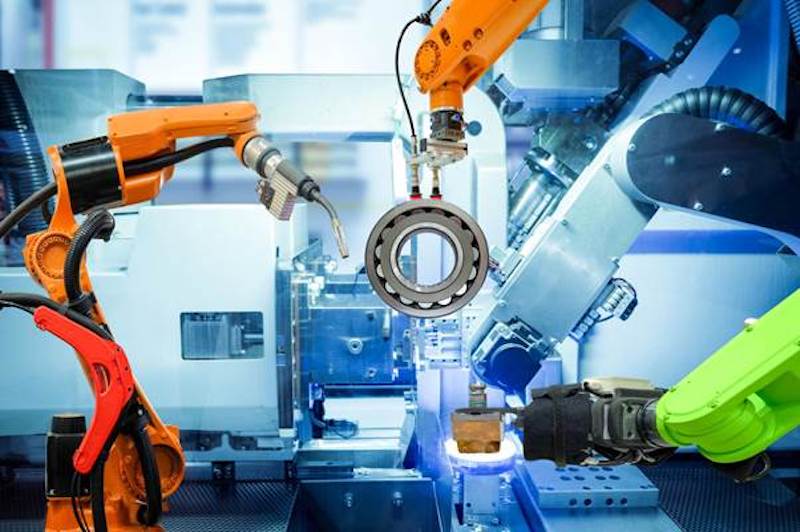
Industrial robotic arm market expected to reach $23.2 billion by 2033
The global Industrial robotic arm market is forecast to be worth $17,925 million by the end of 2023 and expected to grow at an annual growth rate of 12.1 percent during the forecast years of 2023-2033, according to a report by Fact.MR.
Robot market is emerging and also expected to witness greater growth over the forecast year as to increase the efficiency of work and replace human labor.
The industrial robot can be used in various tasks such as for performing precise surgeries, industrial operation and fun toy for learning experience.
The robot arms are capable of pick and place object in different locations which are equipped with CNC work, laser engraving and 3D printing technology. The DIY robot arms comes with customizable features and can be cost effective due to its low manufacturing costs.
Key takeaways from the market study:
- The global industrial robot market is projected to grow 12.1 percent and reach $56,171.4 million by 2033
- The market witnessed 8.9 percent compound annual growth rate between 2018 and 2022
- The industrial robot dominated the market with $15,755.5 million valuations in 2022
- Automotive under end use segment is expected to have market share of 20.3 percent by the end of 2023
- East Asia will dominate the market with 23.4 percent market share in 2023
Competitive landscape
All the industry leader in robotics are making their own strategy to stand out from other competitors in the industrial robots market. Brands like Mitsubishi Electric, ABB, Fanuc, Kuka, Yaskawa, Comau, Epson, Kawasaki Robotics, Staubli International AG, Universal Robots and others other leading players have rolled up their sleeves to enter the market and make their brand presence in the segment.
The global industrial robots market is differentiated, with many large and small market players. Therefore, in order to survive and thrive in such a competitive environment, manufacturers must differentiate their products with technologically advanced and unique products.
This competitive environment can also lead to lower product prices to maintain market positions, which can adversely affect manufacturers’ profit margins.
ABB launched five axes delta robots for lightweight and fastest product picking, packing and re-orientation with the payload capacity of 1.5 kg.
The robot arm will specifically use for the lightweight products such as cookies, chocolates, peppers, small bottes and parcels. The product has capability of moving the product from one place to another of 1 kg products within 120 picks per minutes.
Fact.MR has provided detailed information about the price points of key manufacturers of industrial robot positioned across regions, sales growth, production capacity, and speculative technological expansion, in the recently published report.
Market development
In order to create a better technological architecture that allows more flexibility and efficiency, the major market participants have been investing in R&D. Throughout the medium- to long-term forecast period, these developments will fuel the industrial robot market’s expansion.
For instance, google is planning to launch their Google’s worker robots with personality where engineers will be able to download personalities through cloud based systems. There robot will be capable of storing multiple personality while interacting with humans.
Another development is multi-tasking robots which will be used in restaurants chains and it is develop by momentum machines on a multi-tasking bot. the robot is capable enough to prepare hamburger in less than 10 seconds. These advancements in the robot industry is pacing the installation of robots across end use vertical.


